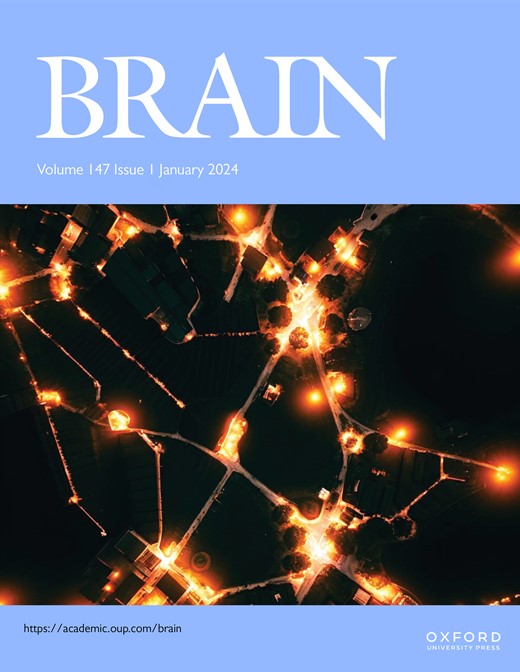纹状体多巴胺传递减少作为精神运动迟缓的跨诊断底物。
IF 11.7
1区 医学
Q1 CLINICAL NEUROLOGY
引用次数: 0
摘要
精神运动迟缓,定义为运动和语言的普遍迟缓,是几种神经和精神疾病的特征。在这篇综述中,我们讨论了纹状体多巴胺能传递减少是帕金森病、药物性帕金森病、抗精神病药恶性综合征、紧张症和抑郁症等疾病运动特征的精神运动迟缓的跨诊断底物的假设。我们检查了临床、流行病学、神经影像学、实验室和治疗研究的证据。帕金森病与紧张症和抑郁症共同表现为运动迟缓和语言输出减少。帕金森病和抑郁症也会出现认知处理缓慢的精神分裂症。此外,抑郁症与帕金森病、紧张症与抗精神病药恶性综合征之间也存在密切的流行病学关系。神经影像学研究也普遍支持精神运动迟缓与多巴胺能传递减少有关,特别是在背纹状体。脑脊液测量高香草酸(多巴胺分解代谢物)产生不一致的结果,非常非特异性。帕金森病和紧张症通常对多巴胺能药物反应良好。相反,多巴胺拮抗剂可诱导帕金森病和紧张症。我们的回顾受到精神运动迟缓测量的可变性和难以区分认知和运动迟缓的限制。其他神经递质,如GABA和血清素,也可能在精神运动速度中发挥重要作用。与帕金森氏病的黑质结构损伤相反,精神疾病中的多巴胺能缺陷可能代表功能破坏。我们建议进一步研究左旋多巴和多巴胺激动剂对抑郁症伴精神运动迟缓的影响。替代的神经成像方法,如PET序列与较短的成像协议和神经黑色素- mri也应该探索。本文章由计算机程序翻译,如有差异,请以英文原文为准。
Reduced striatal dopamine transmission as a transdiagnostic substrate of psychomotor retardation.
Psychomotor retardation, defined as generalised slowing of movement and speech, is a feature of several neurological and psychiatric disorders. In this review, we discuss the hypothesis that reduced striatal dopaminergic transmission is a transdiagnostic substrate for psychomotor retardation underlying the motor features of conditions such as Parkinson's disease, drug-induced parkinsonism, neuroleptic malignant syndrome, catatonia and depression. We examine the evidence across clinical, epidemiological, neuroimaging, laboratory and therapeutic studies. Parkinsonian disorders share slowed movement and a reduction in verbal output with catatonia and depression. Bradyphrenia, slowed cognitive processing, also occurs in Parkinson's disease and depression. In addition, there are close epidemiological relationships between depression and Parkinson's disease, and between catatonia and neuroleptic malignant syndrome. Neuroimaging studies also generally support the association of psychomotor retardation with reduced dopaminergic transmission, particularly in the dorsal striatum. Cerebrospinal fluid measurement of homovanillic acid (a dopamine catabolite) yields inconsistent results and is very nonspecific. Parkinson's disease and catatonia generally respond well to dopaminergic medication. In contrast, dopamine antagonists can induce both parkinsonism and catatonia. Our review is limited by the variability in measurement of psychomotor retardation and difficulty distinguishing between cognitive and motor slowing. It is also likely that other neurotransmitters, such as GABA and serotonin, play an important role in psychomotor speed. It is possible that dopaminergic deficits in psychiatric disorders represent functional disruptions, in contrast to the structural damage to the substantia nigra in Parkinson's disease. We propose further research be conducted into the effects of levodopa and dopamine agonists in depression with psychomotor retardation. Alternative neuroimaging methods such as PET sequences with shorter imaging protocols and neuromelanin-MRI should also be explored.
求助全文
通过发布文献求助,成功后即可免费获取论文全文。
去求助
来源期刊

Brain
医学-临床神经学
CiteScore
20.30
自引率
4.10%
发文量
458
审稿时长
3-6 weeks
期刊介绍:
Brain, a journal focused on clinical neurology and translational neuroscience, has been publishing landmark papers since 1878. The journal aims to expand its scope by including studies that shed light on disease mechanisms and conducting innovative clinical trials for brain disorders. With a wide range of topics covered, the Editorial Board represents the international readership and diverse coverage of the journal. Accepted articles are promptly posted online, typically within a few weeks of acceptance. As of 2022, Brain holds an impressive impact factor of 14.5, according to the Journal Citation Reports.
 求助内容:
求助内容: 应助结果提醒方式:
应助结果提醒方式:


